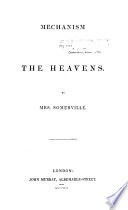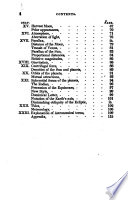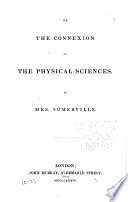 | 1977 - 1412 pages
...over equal areas in equal intervals of time. 3. The squares of the sidereal periods of any two planets are proportional to the cubes of their mean distances from the sun. In 1687 Isaac Newton stated three "laws of motion," which he believed were applicable to the planets.... | |
 | John Bonnycastle - 1816 - 490 pages
...that the squares of the times in which any two planets complete their revolutions in their orbits, are proportional to the cubes of their mean distances from the sun. To illustrate this rule by an example : Venus, for instance, revolves round the sun in 224 days, and... | |
 | John Farrar - 1827 - 456 pages
...by a reference to the third law of Kepler, that the squares of the times of the revolutions of the planets about the sun, are proportional to the cubes of their mean distances. The earth, on the supposition " that it is in motion about the sun, is included in this law. It is... | |
 | Hervey Wilbur - 1831 - 170 pages
...the squares of the periods, in which any two pla* nets complete their revolutions in their orbits, are proportional to. the cubes of their mean distances from the Sun. \ This proportion requires illustration. Let the period of tha Earth's revolution, be called 12 months, and... | |
 | Mary Somerville - 1831 - 710 pages
...observation, that the squares of the periodic times of the planets, or the times of their revolutions round the sun, are proportional to the cubes of their mean distances from his centre : whence it follows, that the intensity of gravitation of all the bodies towards the sun... | |
 | Mary Somerville - 1831 - 720 pages
...Kepler gives whence (85) But, by Kepler's third law, the. squares of the periodic times of the planets are proportional to the cubes of their mean distances from the sun ; therefore T' = *" a\ k being the same for all the planets. Hence c == but 2a (1 — e*) is 2SV, the... | |
 | Hervey Wilbur - 1834 - 172 pages
...that the squares of the periods, in which any two planets complete their revolutions in their orbits, are proportional to the cubes of their mean distances from the Sun. This proportion requires illustration. Let the period of the Earth's revolution, be called 12 months, and... | |
 | Mary Somerville - 1834 - 390 pages
...observation, that the squares of the periodic times of the planets, or the times of their revolutions round the sun, are proportional to the cubes of their mean distances from his centre : whence it follows that the intensity of gravitation of all the bodies towards the sun... | |
 | Mary Somerville - 1834 - 484 pages
...having the sun in one of their foci ; and third, that the squares of the periodic times of the planets are proportional to the cubes of their mean distances from the sun. These laws extend also to the satellites. Latent heat. Caloric existing in all bodies, which is not... | |
 | Hugh Murray - 1837 - 612 pages
...From Kepler's third law, we know that the squares of the periodical times of any two of the planets are proportional to the cubes of their mean distances from the sun. This law is independent of the eccentricities of the orbits; and the same relation would subsist between the mean... | |
| |